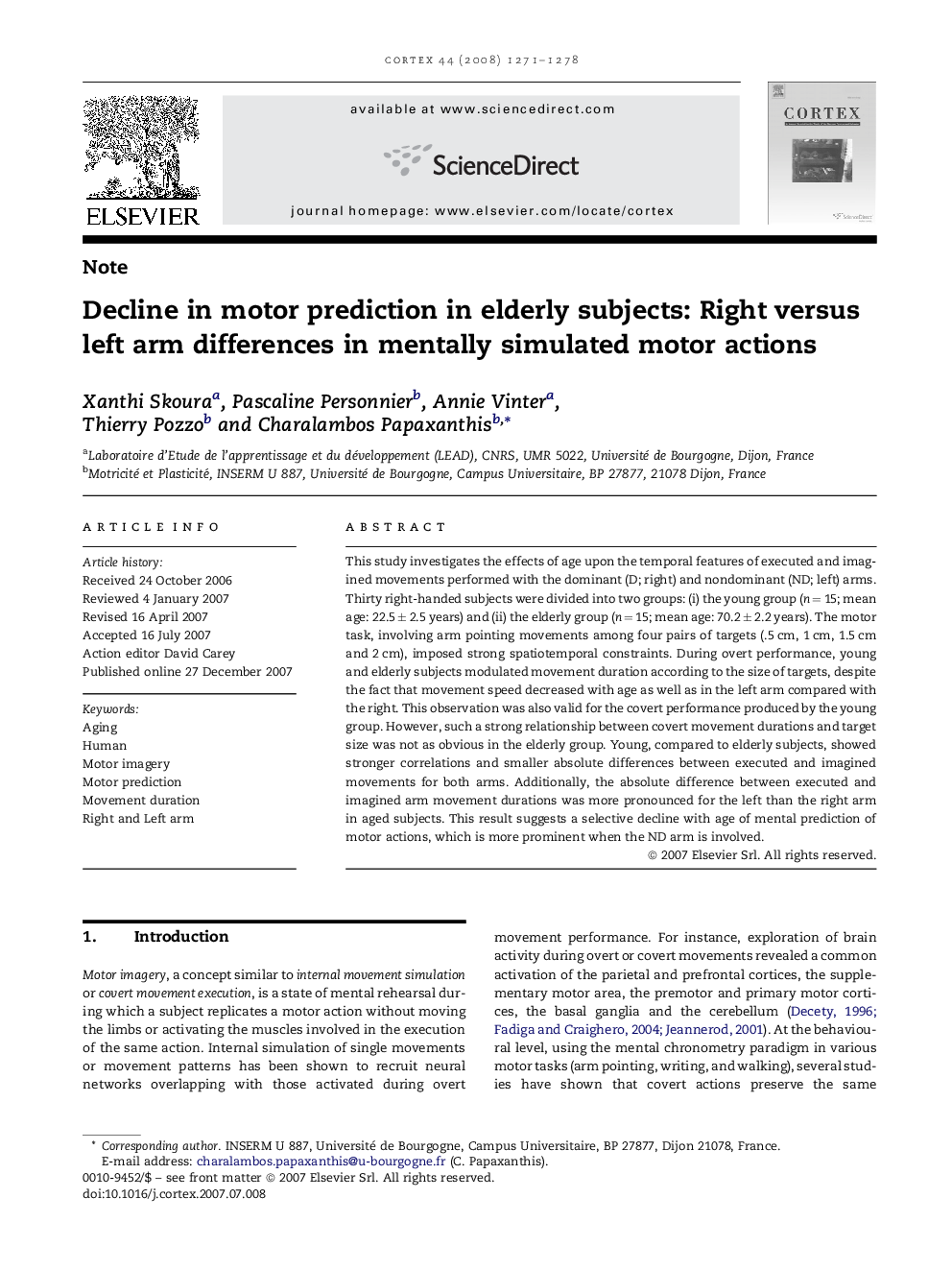| Article ID | Journal | Published Year | Pages | File Type |
|---|---|---|---|---|
| 10463428 | Cortex | 2008 | 8 Pages |
Abstract
This study investigates the effects of age upon the temporal features of executed and imagined movements performed with the dominant (D; right) and nondominant (ND; left) arms. Thirty right-handed subjects were divided into two groups: (i) the young group (n = 15; mean age: 22.5 ± 2.5 years) and (ii) the elderly group (n = 15; mean age: 70.2 ± 2.2 years). The motor task, involving arm pointing movements among four pairs of targets (.5 cm, 1 cm, 1.5 cm and 2 cm), imposed strong spatiotemporal constraints. During overt performance, young and elderly subjects modulated movement duration according to the size of targets, despite the fact that movement speed decreased with age as well as in the left arm compared with the right. This observation was also valid for the covert performance produced by the young group. However, such a strong relationship between covert movement durations and target size was not as obvious in the elderly group. Young, compared to elderly subjects, showed stronger correlations and smaller absolute differences between executed and imagined movements for both arms. Additionally, the absolute difference between executed and imagined arm movement durations was more pronounced for the left than the right arm in aged subjects. This result suggests a selective decline with age of mental prediction of motor actions, which is more prominent when the ND arm is involved.
Related Topics
Life Sciences
Neuroscience
Behavioral Neuroscience
Authors
Xanthi Skoura, Pascaline Personnier, Annie Vinter, Thierry Pozzo, Charalambos Papaxanthis,
